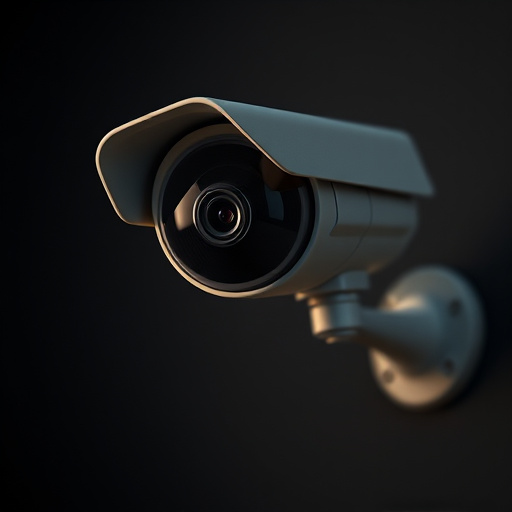Dummy cameras, strategically placed in visible areas like front doors, windows, and garage entrances, can significantly enhance home security by deterring burglars through the illusion of a functional surveillance system. To maximize their effectiveness, position them in clear lines-of-sight covering potential entry points, both indoors and out, creating an aesthetically pleasing yet convincing security setup that discourages criminal activity, while adhering to privacy laws and complementing actual security measures.
Realistic dummy cameras are transforming home security, acting as powerful deterrents against break-ins. By mimicking real surveillance equipment, these fake security cameras send a clear message to potential intruders: your home is protected. This article explores the multifaceted role of dummy cameras in enhancing home security. We’ll delve into the best placement strategies for maximum effectiveness, discuss the types and visual realism of modern models, and consider legal and ethical use cases.
- Understanding the Role of Dummy Cameras in Home Security
- Best Placement Strategies for Effective Deterrence
- Types and Visual Realism of Modern Fake Security Cameras
- Legal Considerations and Ethical Use Cases
Understanding the Role of Dummy Cameras in Home Security
Dummy cameras, often mistaken as mere decorations, play a surprising role in enhancing home security. These realistic fake security cameras serve as powerful deterrents for potential burglars, acting as a visual reminder that your home is under surveillance. By strategically placing these devices, you create an illusion of a fully equipped security system, even if the actual cameras might be hidden or non-functional.
The best placement for fake security cameras is in areas that are easily visible from the street or entry points, such as front doors, windows, and garage entrances. Positioning them at corners or along perimeters can create a sense of all-around surveillance, making it less likely for intruders to attempt an unauthorized entry. Remember, realism is key; ensure the cameras look authentic to maximize their effectiveness in keeping your home safe.
Best Placement Strategies for Effective Deterrence
To maximize the deterrent effect of realistic dummy cameras, strategic placement is key. The best approach is to position them in areas that offer clear lines of sight and cover potential entry points. Windows, doors, and ground-level entrances should be top priorities as these are common targets for burglars. High-quality fake security cameras placed outside these locations can significantly deter would-be intruders, who prefer not to draw attention or trigger alarm systems.
Interior placement is equally important. Hallways, living rooms, and areas where valuable items are stored or commonly accessed should be equipped with realistic dummy cameras. Simulating a comprehensive security setup by placing cameras in multiple strategic spots throughout the home or business can create the illusion of constant surveillance, further discouraging potential criminals from targeting the premises.
Types and Visual Realism of Modern Fake Security Cameras
Modern fake security cameras come in a variety of types, each designed to mimic real surveillance equipment with varying degrees of visual realism. From unassuming decoys that blend seamlessly into household decor to sophisticated models featuring LED indicators and moving parts, these dummy cameras offer diverse options for property owners seeking to deter potential intruders. Their lifelike appearance is achieved through advanced manufacturing techniques, utilizing high-resolution plastic or resin materials that closely resemble the look and feel of actual security cameras.
The best placement for fake security cameras is strategic locations where they can provide a convincing illusion of surveillance while remaining out of sight from would-be thieves. Common spots include corners, behind bushes or plants, on walls near entrances, or even mounted on ceilings. By situating these decoys in areas that offer both visual coverage and concealment, homeowners can create an environment that discourages break-ins without sacrificing aesthetic appeal.
Legal Considerations and Ethical Use Cases
When considering the legal implications of using dummy cameras, it’s crucial to understand that their deployment must adhere to privacy laws and regulations. While fake security cameras themselves are not inherently illegal, the way they are installed and used can be subject to scrutiny. Placement is key; the best location for these devices is in areas where genuine security cameras could be expected, such as near entry points or in open, visible spaces. Discreetly positioning them in hidden spots might raise legal concerns regarding consent and privacy rights.
Ethically, dummy cameras should be used responsibly to enhance actual security measures rather than as a standalone solution. They can serve as valuable decoys, deterring potential criminals by simulating a robust surveillance system. However, it’s essential to ensure that real security equipment remains in place and properly maintained. The ethical use of these devices lies in their ability to provide a layer of psychological protection while encouraging honest behavior, making them a thoughtful addition to a comprehensive home or business security strategy.
Realistic dummy cameras have emerged as an innovative and cost-effective solution for enhancing home security. By strategically placing these devices, homeowners can significantly deter potential intruders, as evidenced by their growing popularity in the market. When selecting and positioning fake security cameras, consider the best placement strategies outlined in this article to maximize their effectiveness. Remember, while legal considerations must be taken into account, the ethical use of these tools can contribute to a safer living environment.
